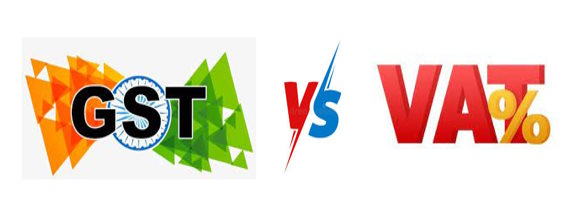Top 20 Differences between GST and VAT
Table of Contents
- 1 Differences between Goods and Service Tax (GST) and Value-Added Tax (VAT)
- 1.1 1. Coverage
- 1.2 2. Rates
- 1.3 3. Input Tax Credit
- 1.4 4. Threshold
- 1.5 5. Complexity
- 1.6 6. Compliance
- 1.7 7. Administration
- 1.8 8. Treatment of Imports
- 1.9 9. Invoicing
- 1.10 10. Registration Process
- 1.11 11. Input Tax Credit for Capital Goods
- 1.12 12. Threshold Limits
- 1.13 13. Treatment of Discounts
- 1.14 14. Taxation of Real Estate
- 1.15 15. Compliance Cost
- 1.16 16. Place of Supply
- 1.17 17. Exemptions
- 1.18 18. Tax Credits on Exported Goods
- 1.19 19. Treatment of Branches
- 1.20 20. Treatment of Inter-State Transactions
Differences between Goods and Service Tax (GST) and Value-Added Tax (VAT)
GST (Goods and Services Tax) and VAT (Value Added Tax) are both consumption-based taxes imposed on goods and services. However, there are several key differences between the two:

1. Coverage
VAT is a tax imposed on the value added to goods at each stage of production, whereas GST is a tax imposed on the value added to goods and services at each stage of production and distribution.
2. Rates
VAT rates can vary depending on the product or service, whereas GST has a uniform rate for all goods and services.
3. Input Tax Credit
Under VAT, input tax credit is allowed only on taxes paid on inputs, whereas under GST, input tax credit can be claimed on taxes paid on inputs as well as capital goods.
4. Threshold
VAT is usually levied on businesses whose annual turnover exceeds a certain threshold limit, whereas GST is levied on all businesses whose annual turnover exceeds a specific threshold limit.
5. Complexity
GST is a more comprehensive tax system compared to VAT. GST is designed to simplify the tax structure and reduce the complexity associated with multiple indirect taxes.
6. Compliance
Under VAT, businesses need to file returns on a monthly or quarterly basis, whereas under GST, businesses need to file returns on a monthly basis.
7. Administration
VAT is administered by state governments, whereas GST is administered by both state and central governments. GST is a unified tax system that aims to bring about uniformity in the tax structure across the country.
8. Treatment of Imports
Under VAT, imports are subject to customs duty and VAT at the point of entry, while under GST, imports are subject to integrated GST (IGST) at the point of entry.
9. Invoicing
Under VAT, businesses need to issue separate invoices for goods and services, while under GST, businesses need to issue a single invoice for goods and services.
10. Registration Process
The registration process under GST is centralized and standardized, while under VAT, the registration process varies from state to state.
11. Input Tax Credit for Capital Goods
Under VAT, input tax credit for capital goods is allowed only if the capital goods are used for taxable purposes, while under GST, input tax credit is allowed for all capital goods.
12. Threshold Limits
The threshold limit for GST is higher than that for VAT, meaning more businesses fall under the GST regime.
13. Treatment of Discounts
Under VAT, discounts are taxed, while under GST, discounts are not taxed as long as they are accounted for in the invoice.
14. Taxation of Real Estate
Under VAT, real estate is taxed separately, while under GST, it is taxed as a service.
15. Compliance Cost
The compliance cost under GST is generally lower than that under VAT due to simplified procedures and reduced paperwork.
16. Place of Supply
The place of supply rules under GST are more uniform and standardized than those under VAT, which vary by state.
17. Exemptions
GST has fewer exemptions than VAT, making the tax system more comprehensive.
18. Tax Credits on Exported Goods
Under VAT, exporters are eligible for tax credits on goods and services used for exports, while under GST, they are eligible for refunds.
19. Treatment of Branches
Under GST, branches are considered as separate entities for tax purposes, while under VAT, branches are considered as part of the same entity.
20. Treatment of Inter-State Transactions
Under VAT, inter-state transactions are subject to central sales tax, while under GST, they are subject to IGST.
In summary, while both VAT and GST are consumption-based taxes, there are several key differences between the two. GST is a more comprehensive tax system designed to simplify the tax structure and reduce the complexity associated with multiple indirect taxes. GST also offers greater flexibility in terms of input tax credit and has a uniform tax rate for all goods and services.


